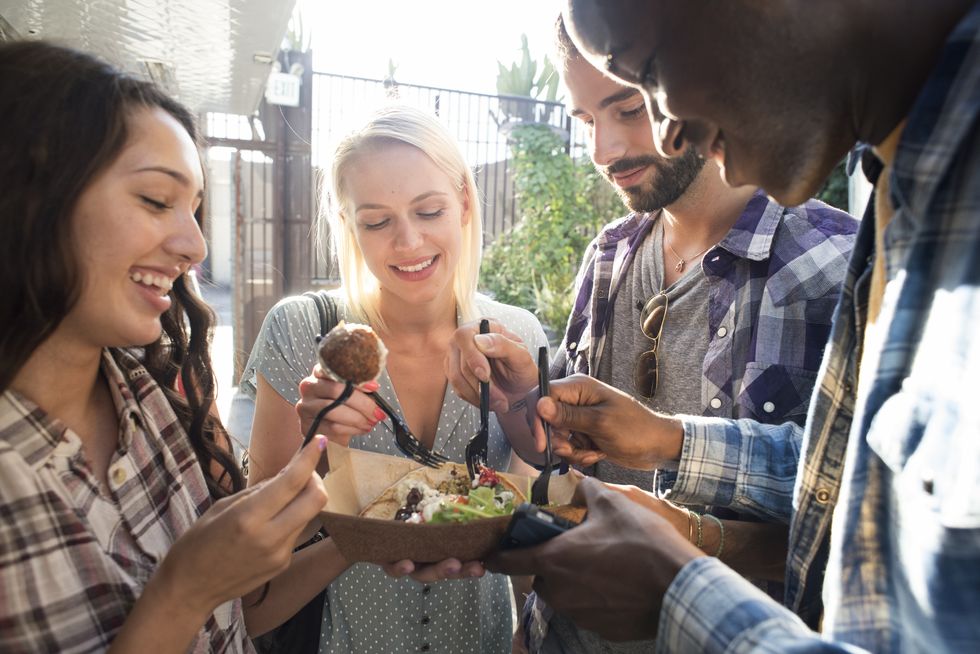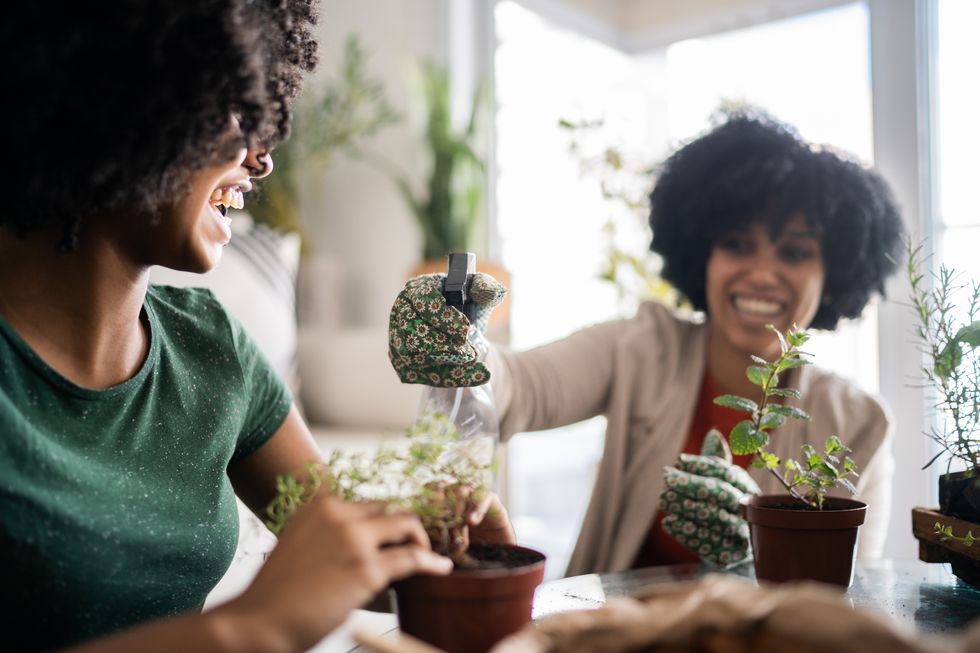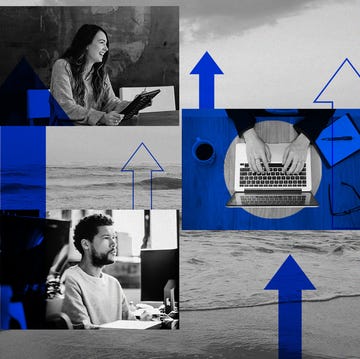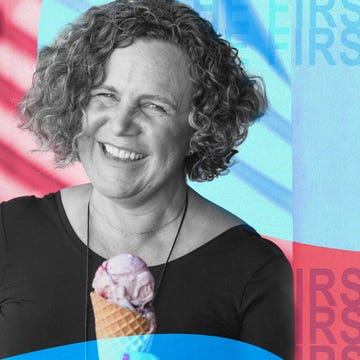In the Shondaland series Financially Fearless, we’re getting candid about how money impacts everyone’s lives. Our solutions will detail how to boost your financial well-being, trim overspending, craft a budget, and discuss money matters with loved ones.
From the moment I was old enough to waddle and crack a smile, strangers told my parents I was going to be a social butterfly. The prophecy foretold by patrons in line at grocery stores and women sitting in hair salons turned out to be true. For as long as I can remember, I have reveled in the thrill of meeting people and making new friends. However, when I packed up my little silver Suzuki and moved across the country in 2017, what supermarket prophets once deemed a divine blessing started to feel more like a curse.
The first few months in the foreign land of Los Angeles, my calendar was chock-full with coffee dates with coworkers, plans to eat my way through night markets alongside acquaintances I’d hoped to upgrade to pals, and $50 dinners with casual connections I wasn’t sure I’d ever see again. The truth is that even with a packed planner, I felt lonelier than I ever had in my life. Living in a place where I had no close family or friends, I quickly realized: All I really wanted was someone to sit on the couch in pajamas with and watch bad TV.
For the first time, I was tasked with making friends as an adult without the help of a social or educational infrastructure other than work. There were no classes or extracurricular activities. There was no place to repeatedly show up in order to foster the time and space necessary to build relationships, so I traded school hallways and club meetings for restaurants and coffeehouses.
At the time, I was making $12 an hour in an assistant role. I found myself emptying my wallet to build relationships that I craved as much as the overpriced cheeseburgers I was eating. In the midst of what felt like doling out cash in exchange for friendship, I began worrying that spending money was the only way to have a good time.
In today’s world, experiences take center stage. From lavish weekend trips and themed pop-up museums to cute-in-theory-but-subpar-in-reality brunches featuring $20 mimosas (that are mostly orange juice, BTW), it’s become too normal to drop Jacksons and Benjamins on a single outing with buddies. After a few weekday happy hours, you’ve spent the same amount as your monthly utilities before payday. Don’t get me started on those three- and four-day bachelorette excursions that can cost $1,000 per person or more. They’re extravagant vacations, in truth.
Friendship and money have become inextricably linked. I love a trip and a spicy margarita on the rocks as much as the next person, but friendships — both seasoned and budding ones — don’t always have to be financial transactions. Even now, living in New York and earning more money, I still find myself questioning how much more intentional my relationships could be if I stripped away the dollars and distractions.
For one month this year, I explored what my friendships looked like if the price of intimacy didn’t include $50 meals. Not spending money ever — or at all — isn’t a reality. Relationships are investments, whether it’s with our dollars or our time. Here is what I learned by focusing less on expensive excursions, and how you can implement these ideas into your friendships too.
Have meals with meaning
In cultures outside of the United States, it’s customary, and in some cases expected, that friendships cost you. In Spain and many Latin cultures, if you’re invited to drinks or a meal, the asker is traditionally the one who pays, especially for special occasions like birthdays. In China and some Asian cultures, splitting the bill can actually be seen as offensive. In fact, it’s not uncommon to see friends argue over who will get to pay the check at the end of the night because it’s believed to be a privilege and honor.
For these cultures that historically value relationship building, sharing a meal is seen as an important step in forming a long-term companionship or partnership full of trust and respect. There is no such thing as a casual, cheap, or nonchalant meal, nor is there any point in meeting or networking with someone you have no plans to see again. Treating the other person is synonymous with saying, “I want to continue this relationship with you.” While this approach isn’t financially sustainable over the long term, it is meaningful to consider.
This mindset made me rethink how I approached eating and drinking out and about with friends. I cut back on pricey dinners as a convenient platform to catch up and planned outings as more of a celebration for milestones or special occasions, such as birthdays and promotions. Before inviting someone to coffee or drinks, I first considered whether treating them was a possibility as a token of appreciation for their presence in my life or my desire for their continued presence in my life. Thinking of meals as a way to build a bridge and not a constant meeting place made these outings all the more special — and easier on my wallet.
Invite people in
In researching and writing about friendship, I’ve learned from renowned psychologists and relationship experts that shared experiences are one of the most important puzzle pieces in building a bond with someone. Naturally, it is far more exciting to sign up for a goat yoga session with a pal than to do a workout video together in your living room, and way less complicated to choose a restaurant than to cook and host an entire meal.
I exchanged convenience for creativity and dollars for deeper conversations in less-crowded spaces. I threw small game nights at my sixth-floor apartment, started a two-person book club with a friend across the country, and ate leftovers from my fridge while watching Dancing With the Stars with a dear friend.
Inviting someone in doesn’t just mean asking them into your physical space but into your mental space as well. Despite any temporary discomfort as we searched for new subjects to talk about or transitioned into topics that, at first, felt perhaps too personal, we ended up having in-depth conversations.
Our relationship has deepened, and I learned that intimacy unfurls in new shapes in new settings, whether it’s stumbling upon silly moments in wide, open spaces or finding comfort in sheer silence while sitting in places cozy and familiar to us. How do you know someone cares about you? Ask them to do nothing together. You’ll find out very quickly.
Plan pressure-free playdates
When reflecting on my earliest friendships, I realized that there was a sense of security yet freedom in walking around with nowhere to go and getting dropped off at someone’s front door with absolutely zero plan for the next few hours. With no money other than a little bit of change we may have received in exchange for chores, we used our imaginations and allowed our conversations to guide us.
I came to the conclusion that even as adults, we can have playdates. Instead of meeting one friend out, I asked if she wanted to come over or meet at a midway point between us on a weekend day. We blocked off a few hours, connected in person, and decided we’d figure it out from there.
We had hot cocoa on the couch, then went on a slow walk in the park. We came across a street festival, then window-shopped in a cute neighborhood. Having no plan allowed us to be even more adventurous, and everything became that much more wonderful and exciting.
Run errands together
When sinking my teeth into Sex and the City for the first time, I remember being dazzled not by Carrie, Miranda, Charlotte, and Samantha’s fabulous lifestyles, but by the unapologetic depth of their love for one another. The scenes in the series that I marveled at weren’t pricey dinners at The Modern or prancing around gallery openings. It was when the quartet accompanied one another to the doctor’s office, traipsed through Washington Square Park to pick up something on their lunch breaks, and rolled up their sleeves to talk about life while helping one another move into a new place.
Trading expensive experiences for everyday tasks made me realize I can be my most comfortable with friends. I was shocked when I invited one friend to run errands with me. It started raining, and she still tagged along — umbrella and all.
I discovered warmth and connection in the fact that some of my friends wanted to engage in the most mundane and simplest of tasks with me — and vice versa. It wasn’t what we were doing that mattered. It was getting to be together that did.
Mia Brabham is a staff writer at Shondaland. Follow her on Twitter at @hotmessmia.
Get Shondaland directly in your inbox: SUBSCRIBE TODAY

















